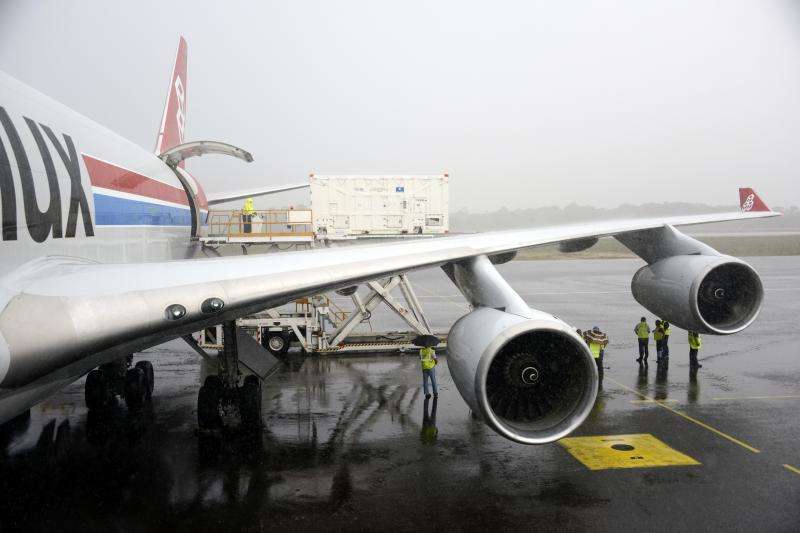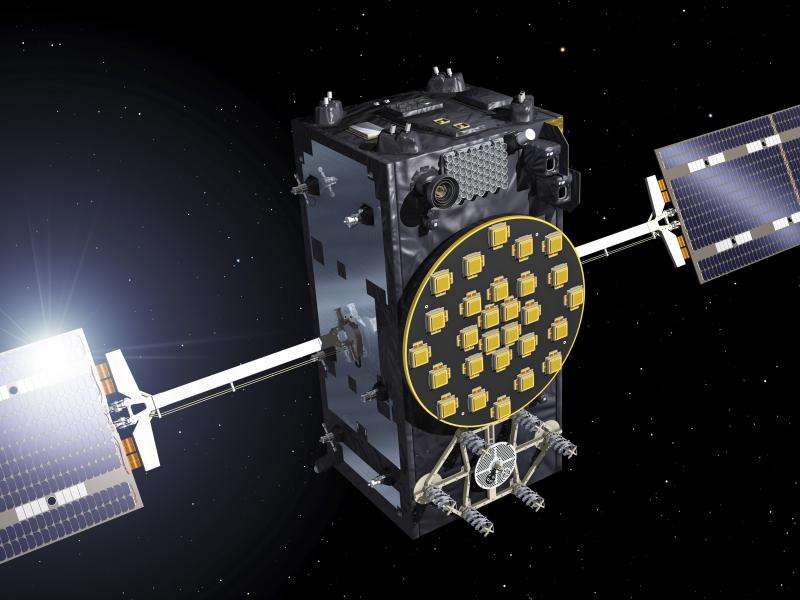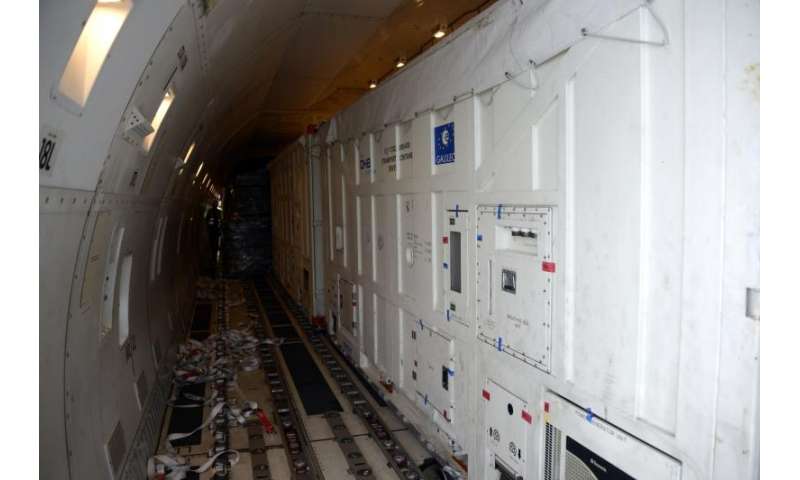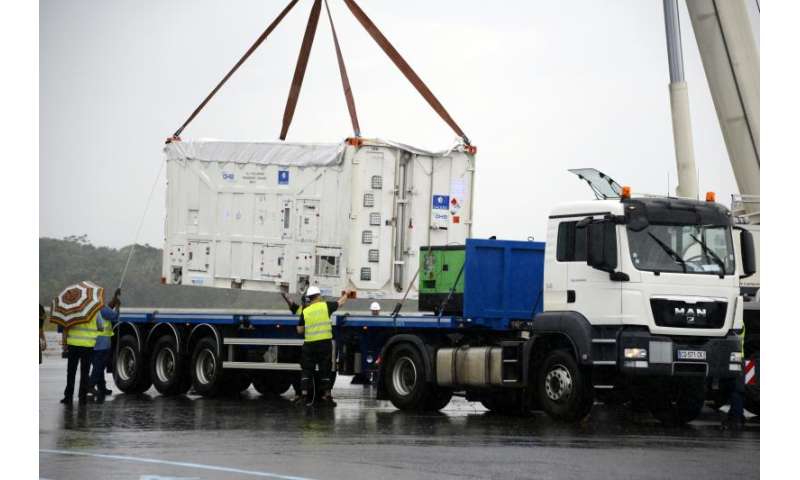Galileo pair preparing for December launch

The next Galileo launch campaign has begun with the arrival of the latest pair of navigation satellites at Europe's Spaceport in French Guiana.
Their arrival is the start of a busy schedule that will culminate with their launch on a Soyuz rocket on 17 December – the third Galileo launch of the year.
Galileos 11 and 12 touched down at a rain-soaked Cayenne-Félix Eboué Airport on Friday at 1300 local time.
The satellites were unloaded from their Boeing 747 aircraft, still in their humming air-conditioned containers, straight onto waiting lorries for the last leg of their trip to the Spaceport.
The containers were delivered to the S1A payload facility, where they were unboxed in cleanroom conditions.
The two satellites began their journey the previous day when they left ESA's ESTEC technical centre in Noordwik, the Netherlands, having completed a long phase of environmental testing to prove their readiness for flight.
They were driven to Luxembourg Airport for a departure early the next morning.
The satellites' arrival at the launch site is the last step in a long chain of production and testing that stretches across Europe.
The satellites are built by OHB in Bremen, Germany, with their navigation payloads coming from Surrey Satellite Technology Ltd in Guildford, UK, both companies being supplied in turn by subcontractors across much of the continent.

The satellites are then taken to ESTEC, where they are exposed in turn to every aspect of the launch and space environments, including noise, hard vacuum and wild extremes of temperature.
Each satellite is also plugged into the entire worldwide Galileo ground network for days on end to check it works as planned.
The launch of the 11th and 12th in the series will mean that the total number of Galileo satellites in space will have doubled within a year, setting the programme on track for the start of initial services during 2016.
-

Galileos 11 and 12 inside their protective containers within their transporter aircraft, during their 30 October 2015 flight from Luxembourg to French Guiana. Credit: Galileo–P. Muller -

One of the two Galileos being loaded onto a lorry for transport from Cayenne-Félix Eboué Airport to the Guiana Space Centre. Galileos 11 and 12 touched down in French Guiana on 30 October 2015 ahead of a planned 17 December launch. Credit: ESA–P. Muller
Provided by European Space Agency




















